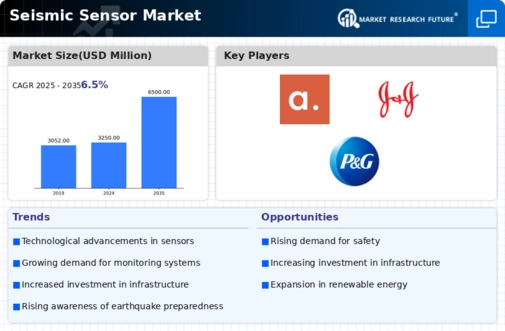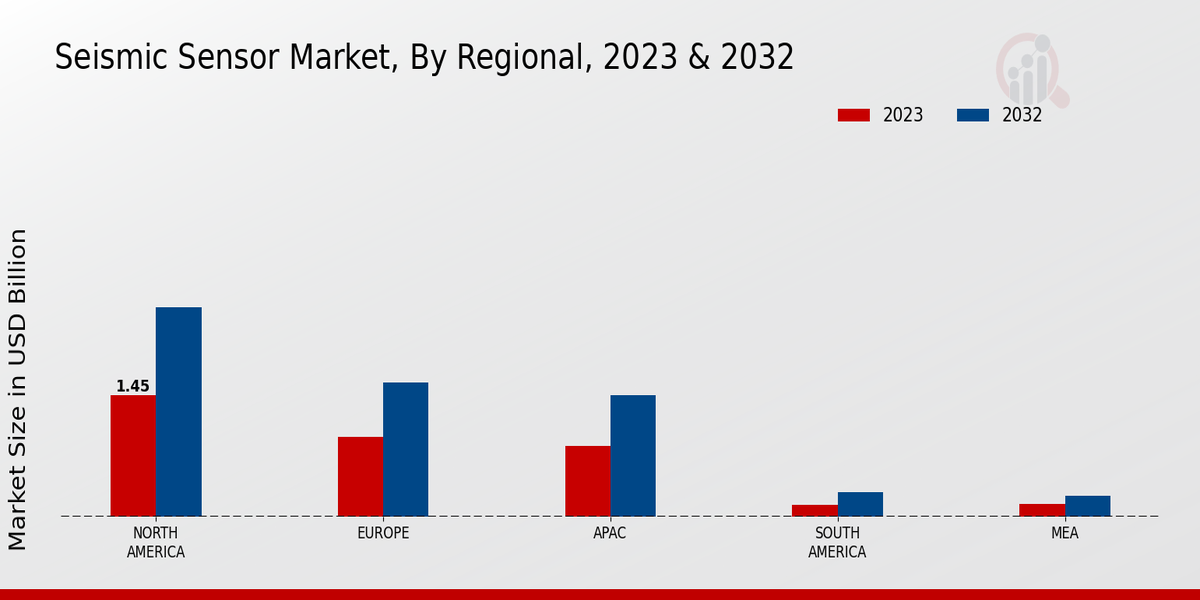Market Growth Projections
The Global Seismic Sensor Market Industry is projected to experience substantial growth over the coming years. With an estimated market value of 3250 USD Million in 2024, the industry is expected to reach 6500 USD Million by 2035. This growth trajectory indicates a compound annual growth rate of 6.5% from 2025 to 2035, reflecting the increasing investments in seismic monitoring technologies. As more stakeholders recognize the importance of earthquake preparedness and response, the demand for advanced seismic sensors is likely to rise, further contributing to the overall expansion of the market.
Government Initiatives and Funding
Government initiatives play a critical role in shaping the Global Seismic Sensor Market Industry. Many countries are implementing policies aimed at improving disaster preparedness and response capabilities. Funding for seismic research and infrastructure development is increasing, as governments recognize the need for advanced monitoring systems to mitigate risks associated with earthquakes. For instance, various national and local governments are allocating budgets specifically for the installation of seismic sensors in vulnerable regions. This proactive approach is expected to drive market growth, as public funding often leads to increased adoption of seismic technologies.
Growing Awareness of Seismic Risks
There is a growing awareness of seismic risks among populations in earthquake-prone regions, which is influencing the Global Seismic Sensor Market Industry. Educational campaigns and community engagement initiatives are fostering a better understanding of the importance of seismic monitoring. As individuals and businesses become more aware of the potential impacts of earthquakes, demand for reliable seismic sensors is likely to increase. This heightened awareness is expected to drive market growth, as stakeholders seek to invest in technologies that can provide early warnings and enhance safety measures in their communities.
Increasing Demand for Earthquake Monitoring
The Global Seismic Sensor Market Industry is experiencing heightened demand for earthquake monitoring systems. As urbanization accelerates, the need for robust infrastructure protection against seismic events becomes paramount. Governments and organizations are investing in advanced seismic sensors to enhance early warning systems, thereby minimizing potential damage and loss of life. In 2024, the market is projected to reach 3250 USD Million, reflecting a growing recognition of the importance of seismic monitoring. This trend is expected to continue, with the market potentially reaching 6500 USD Million by 2035, driven by the increasing frequency of seismic activities globally.
Technological Advancements in Sensor Technology
Technological innovations are significantly influencing the Global Seismic Sensor Market Industry. The development of high-sensitivity sensors and real-time data processing capabilities enhances the accuracy and reliability of seismic measurements. These advancements allow for better detection of minor seismic events, which can be crucial for research and early warning systems. As technology evolves, the integration of artificial intelligence and machine learning into seismic data analysis is anticipated to improve predictive capabilities. This trend is likely to attract investments, further propelling market growth as stakeholders seek to leverage cutting-edge technology for enhanced seismic monitoring.
Expansion of Research and Development Activities
The Global Seismic Sensor Market Industry is witnessing an expansion in research and development activities aimed at improving seismic monitoring technologies. Academic institutions and private companies are collaborating to innovate new sensor designs and data analysis methods. This focus on R&D is crucial for addressing the evolving challenges posed by seismic events. As a result, the market is likely to benefit from the introduction of more efficient and cost-effective seismic sensors. The anticipated compound annual growth rate of 6.5% from 2025 to 2035 suggests that these advancements will play a significant role in shaping the future of the industry.





